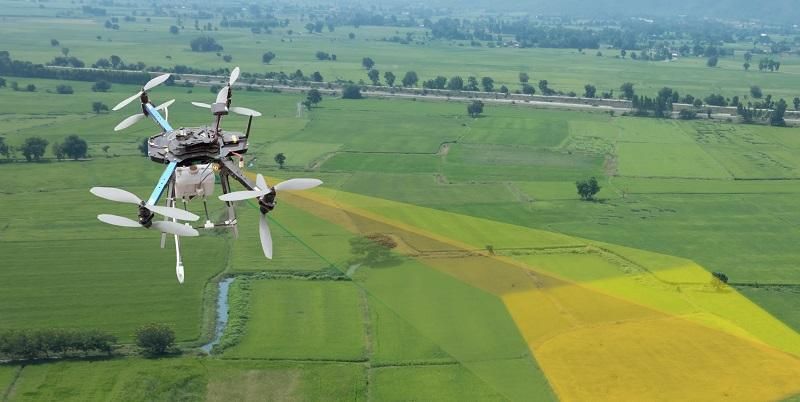Imaging and robots

Industrial farming has brought huge gains in yield and productivity in agriculture, but it has also increased the impact on the environment, from the chemicals sprayed onto fields to the compaction of soils.
One option for reducing the environmental footprint of farming is to adopt more precise, automated systems that can work around the clock to perform many of the tasks that farmers must fit into their day.
Our researchers are developing robots to sow, spray and harvest crops. Others can trundle or fly around fields checking on the health of plants or monitoring them to identify the right time to harvest. We are also testing imaging technology that can watch animals continuously for signs of ill health or other problems so that the farmer can be alerted.
Robotic helpers: from seed to harvest
Until recently most robots have been confined to the clean, uncluttered environments of purpose built factory floors and assembly lines. Farms present a unique challenge by adding people, animals, mud and inclement weather into the mix. We are developing a new generation of robotic platforms that will be able to operate safely and reliably in this complex environment. The aim is to provide a hands-free system from sowing to harvest.
Professor Shane Xie, from the School of Electronic and Electrical Engineering, is building on his work at the University of Auckland, New Zealand, where he developed a robot capable of picking fruit and automated food sorting machines. He and his team will be using 'soft robotics' to build devices that can be mounted on a mobile platform capable of traversing the farm environment. These will include robotic arms with soft grippers to pick fruit from orchard trees and place them carefully in collection trays.
We are also developing systems that can automatically dispense fertiliser or pesticide in a precise manner according to information gathered from sensors deployed around a field. We also hope to build robotic crawlers that can move between plants, and drones that can fly above, to monitor for disease and growth.
Extra eyes
While remotely operated and autonomous robots will be able to assist farmers to become more efficient and profitable, these systems will need to be able to 'see' to operate. Computer vision will be crucial to help these robots navigate around a farm but also perform its daily tasks.
We are developing systems through machine learning that can identify different plants, establish if fruit is ready to be picked and spot signs of disease. We are also working on automated identification of plant growth and water loss from hyperspectral imaging cameras.
Drone imagery can also be useful to identify levels of water sitting on the surface of fields, which can help give information about soil structure. Machine vision can help here too.
In animal science, our researchers, led by Professor Lisa Collins, are testing systems that can automatically monitor animal behaviour during both night and day. They have developed algorithms that can identify individual animals through standard CCTV cameras and track them. They are training the system to look for changes in behaviour or signs of ill health, so it can give farmers an early warning of a disease emerging in their herd or flock.
Our other research areas